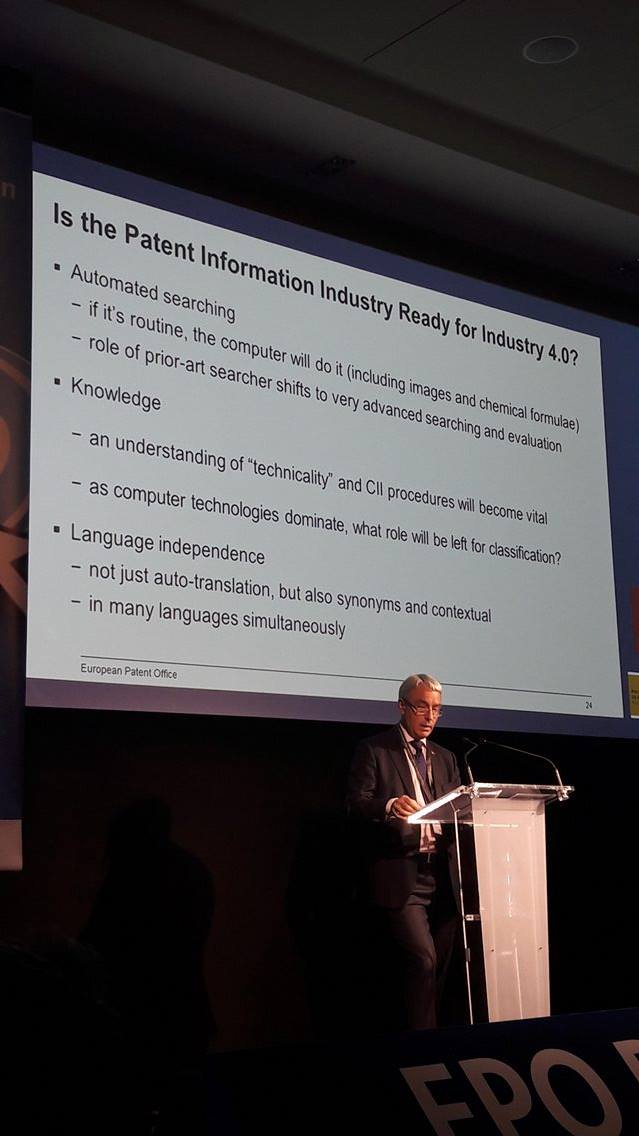

This EPO presentation spoke of software patents ("CII"). Photo credit: EPO Patent Information Conference 2016 (Grant Philpott)
THE EPO does not seem to mind the law (or any of the laws). It exists in a vacuum and it grants software patents in Europe in defiance of directives, the public interest, and the EPC.
The European Patent Office will potentially allow a patent if the claimed subject matter is novel and inventive and has a technical character – even if the invention is computer implemented. A computer program itself can potentially be patented at the European Patent Office if it is capable of bringing about, when running on a computer, a further technical effect going beyond the “normal” physical interactions between the program (software) and the computer (hardware) on which it is run.
On the face of it, the decision issued in July by the Australian Patent Office may be discouraging as the apparent rejections relate to a broad range of fields of innovation – from collection and analysis of data, targeting advertising, statistical optimisation for assay analysis, and insurance policy management.
However, it does appear that the Patent Office is operating on a case by case basis, and in addition looking to authorities which ostensibly require a demonstrable technical effect (see, eg, Aerotel), a concrete, physical effect (see, eg, Grant), and/or distinctions from a generic computer system(s). Therefore, we would advise that when seeking to apply for patent protection in Australia, you consider these authorities and seek a professional opinion – so feel free to contact us with any questions.
Notwithstanding the above, given the contention around the issue of patent eligibility of software, and the fact that the interpretation of the Patents Act may be subject to change as more cases are brought before the courts, we could well see a relaxing (or tightening) of these requirements in years to come.
USPTO 8,369,828 “Mobile-to-Mobile Payment System and Method”; USPTO 8,073,895 & 8,572,166 “System and Method for Delivering Web Content to a Mobile Device”; USPTO 8,315,184 “Computer to Mobile Two-Way Chat System and Method”
In Decision T 488/16, the Boards of Appeal of the European Patent Office (BoA) have revoked EP 1 169 038, which protected the blockbuster protein tyrosine kinase (PTK) inhibitor dasatinib (Sprycel€®). The only request on file -- a single claim directed to dasatinib per se or a salt thereof -- was found to lack inventive step in view of the absence of evidence in the application as filed (and the common general knowledge) which rendered the activity of dasatinib in inhibiting PTK "plausible". A general statement in the application as filed that "Compounds described in the following Examples have been tested in one or more of these assays, and have shown activity" was not by itself considered enough to render it credible to the skilled person that the described compounds were PTK inhibitors. In the absence of a plausible disclosure of activity against PTK in the specification as filed, the objective technical problem was defined by the Board of Appeal as merely "the provision of a further chemical compound". The extensive clinical data which became available after the filing date of the patent evidencing biological activity was not taken into account when determining inventive step.
The Boards of Appeal of the European Patent Office have for many years imposed a requirement that claims for large molecules (e.g., proteins) must be supported by a plausible disclosure of biological activity in the application as filed (see, for example, T 1329/04). A similar requirement for a plausible disclosure of activity in the original specification has also been required to support medical use claims (see, for example, T 0609/02). However, this Decision indicates that the Boards are willing to apply the same strict standards when assessing claims for small molecule drugs per se.